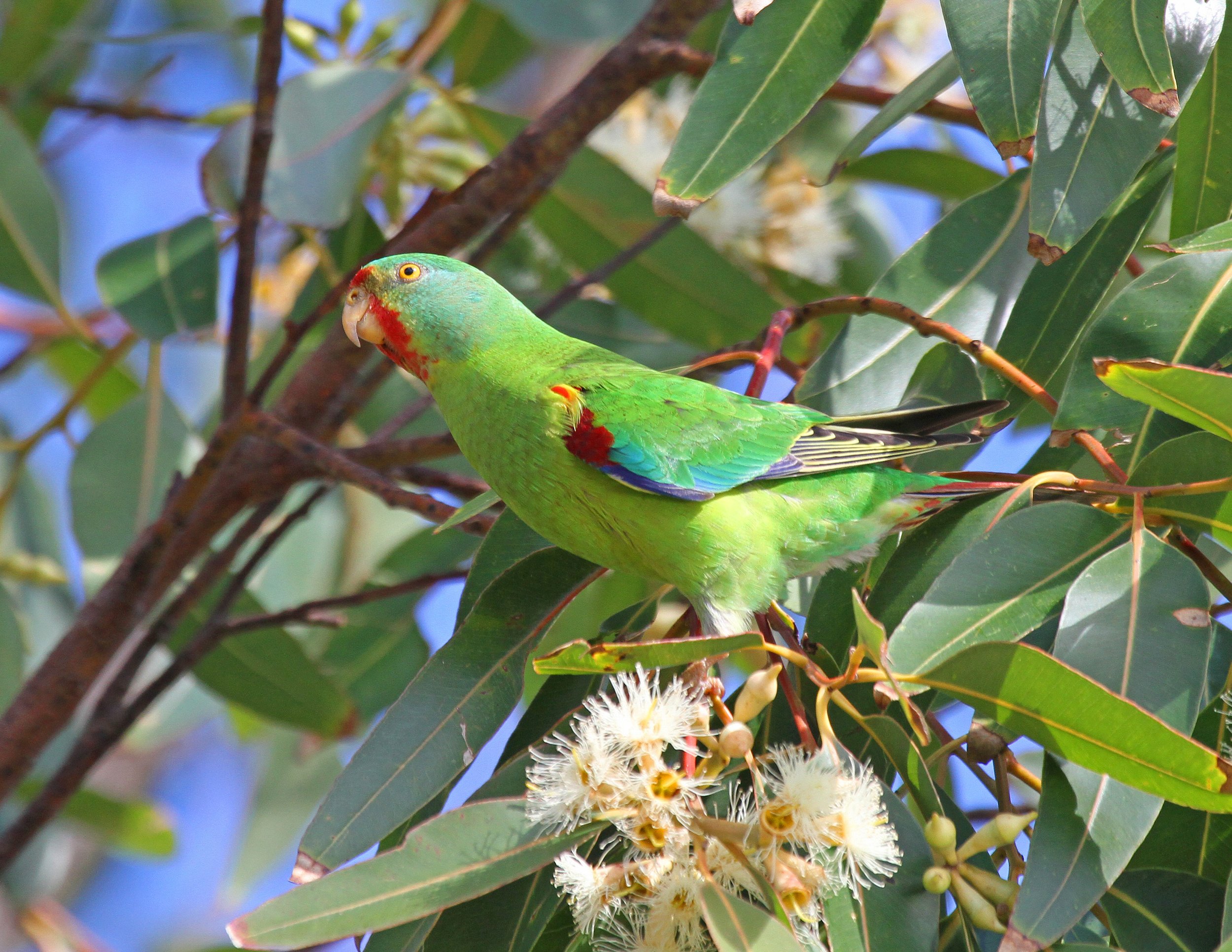Birds of Avoca
Azure Kingfisher (credit: Daniel McKeon)
By Nick Carson, Environmental Education Officer, Central Coast Council
Birds are the most readily seen and heard animals in Avoca Beach. We are so fortunate to share the environment with our feathered friends; from the top of Kincumba Mountain to the surf.
Most of us see Rainbow Lorikeets in the backyard and Silver Gulls on the sand every day, but did you know that more than 150 species have been recorded here?! That’s a big number!
Let’s take a closer look at where to find them…
Powerful Owl (credit: Laurie Smith)
In the forested gullies, Powerful Owls, Australia’s largest, make their presence known in the winter breeding season with loud double hoots at night.
The freaky trills, screeches and whistles of the Sooty Owl send a shiver down the spine of residents in Picketts Valley and Hillside Rd. While the call of the Southern Boobook is much more pleasant.
Regent Bowerbirds, surely one of the most beautiful birds in the world and the meowing Green Catbird search for fruit in the undergrowth.
The repetitive call of the Wonga Pigeon is often heard on the hillsides and the metallic squeak of Australian King-Parrots gives them away before their bright red and green feathers are seen. Australian Brushturkeys turn over the mulch in search of fruit and worms.
Glossy-black Cockatoos are occasionally seen at Winney Bay but more often on Kincumba Mountain where they feed on Allocasuarina seeds.
The beautiful lagoon is a haven for resident and migratory birds. On any visit to the shore, you are likely to see Australasian Darters, several species of cormorants, Black Swans, Chestnut Teal and Australian Pelicans. With a keen eye, if conditions are right, you may find Nankeen Night Herons roosting in the tall trees at Heazlett Park.
Black Bittern (credit: Christina Port)
But if you venture out onto the Lagoon in a kayak and explore Bareena Island and Saltwater Creek, you may spy a whole range of unusual birds in the reeds and mudflats. Tiny Red-kneed Dotterels hunt invertebrates, Black Bitterns freeze to avoid detection, Pied Stilts yap at intruders and Azure Kingfishers dive for fish.
Some of our birds live the dream of the endless summer and head for warmer climes at the end of Autumn. Once spring arrives, some species announce their return to Avoca with very loud (sometimes nocturnal) calls! You can’t miss the sound of Pacific Koels and Channel-billed Cuckoos (especially if you have a Mulberry tree) when they return from Indonesia and Papua New Guinea! Dollarbirds cackle from the tops of tall dead trees and powerlines after their return from the north. Latham’s Snipe spend the summer in the lagoon after flying from Japan while the White-throated Needletail flies all the way from Siberia! The Bar-tailed Godwit, world record holder for the longest non-stop flight from Alaska each year is occasionally seen when the lagoon levels are low and mud is exposed.
Swift Parrot (Credit: Christina Port)
The Critically Endangered Swift Parrot actually visits us in winter to escape chilly Tasmania. Look for them in flowering Eucalypts such as Swamp Mahogany.
As we head towards the beach, it’s common to see Australasian Figbirds in the Tuckeroo trees outside the shops and Topknot Pigeons feeding on figs at Heazlett Park.
Down in the dunes, White-breasted Woodswallows hawk for insects and rest on the shark tower, while Little Wattlebirds feed on Banksia nectar. Superb Fairywrens search for insects in the Acacia and Black-shouldered Kites hover at dusk while hunting for rodents.
At the rock pool, Silver Gulls, Crested Terns and Little Pied Cormorants have a rest, while Sooty Oystercatchers occasionally seek refuge here when their favoured rock platforms are covered by big seas.
Brahminy Kite (credit: Laurie Smith)
If you spend much time at the beach, it pays to look skyward for a soaring White-bellied Sea-Eagle, diving Osprey, or a Brahminy Kite gliding past. The cliffs at Winney Bay and Copacabana are home to a pair of Peregrine Falcons – the world’s fastest bird! The presence of these aerial hunters is often given away by the repeated yaps of Noisy Miners.
Surfers are occasionally accompanied by a bodysurfing Little Penguin, while Australasian Gannets and Black-browed Albatrosses enjoy the strong winds in winter.
That’s just a small selection of the amazing bird diversity in and around Avoca Beach! How many of these species have you seen?
We all know why the birds love Avoca just as much as we do. If you would like to make it even better and improve habitat for our birds, join Council’s Environmental Volunteer Program https://www.centralcoast.nsw.gov.au/environment/environmental-programs/environmental-groups
To learn more, join the Central Coast Group of Birding NSW and take part in regular outings or visit ‘Central Coast Birders’ on Facebook.
To record sightings, especially Swift Parrots, download Birdata or eBird on your phone.





